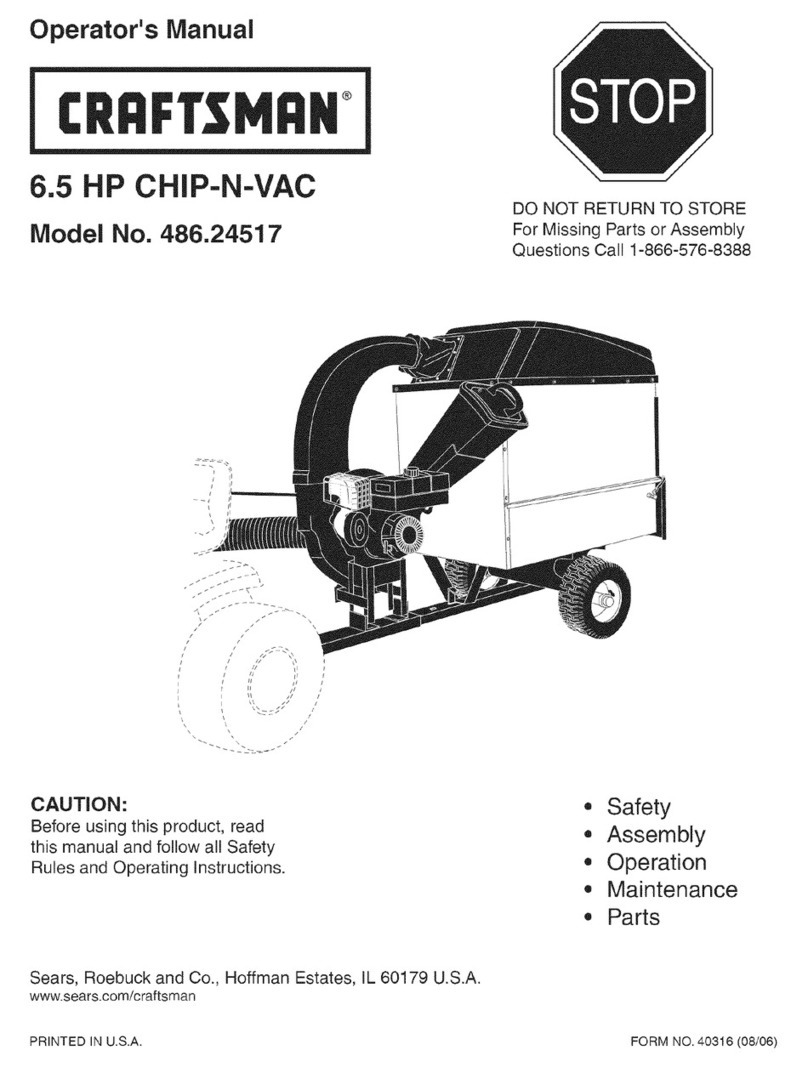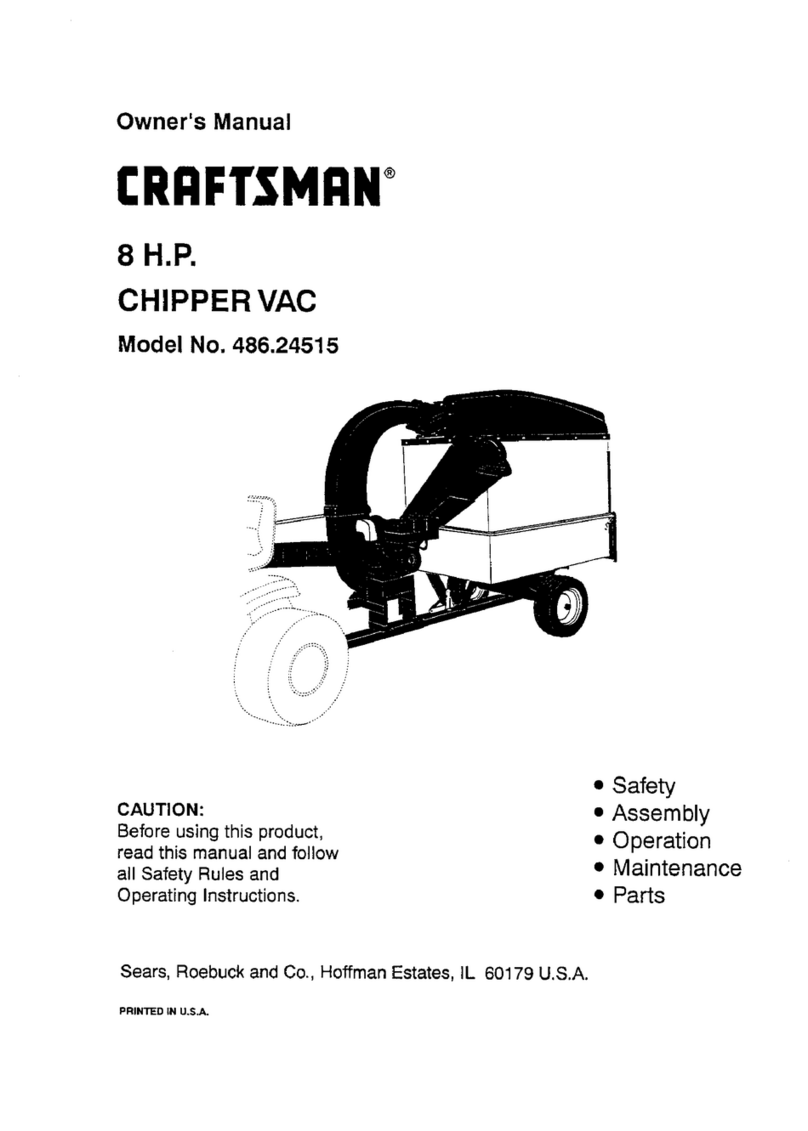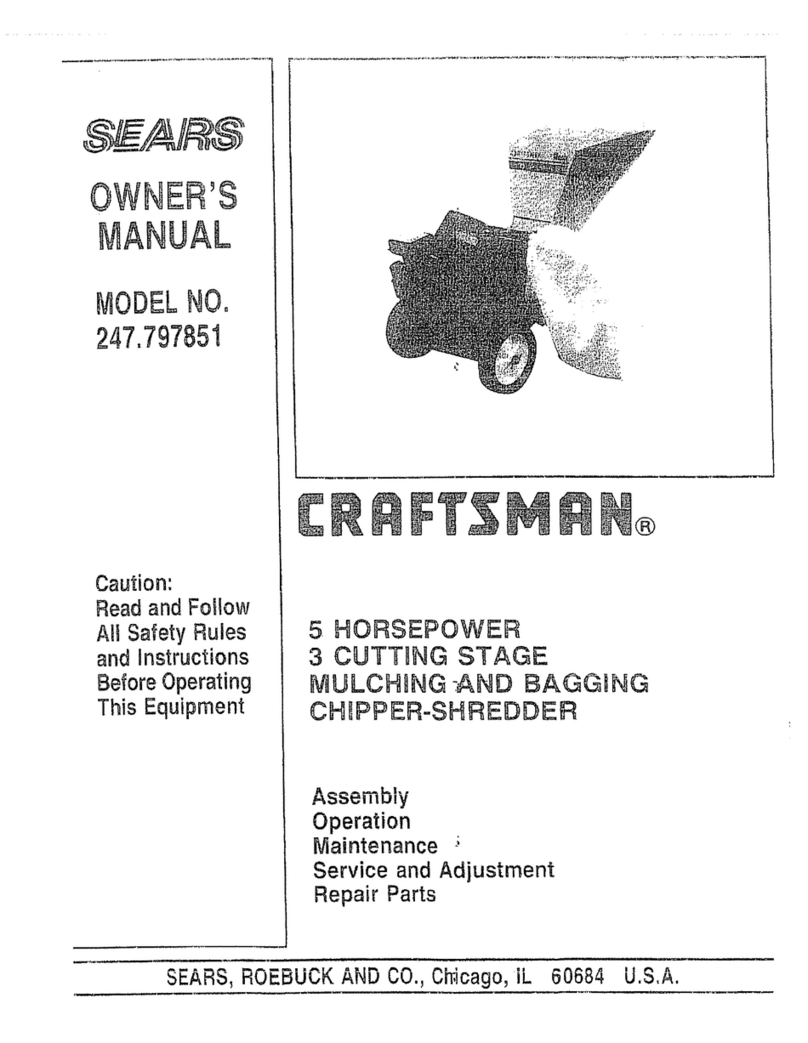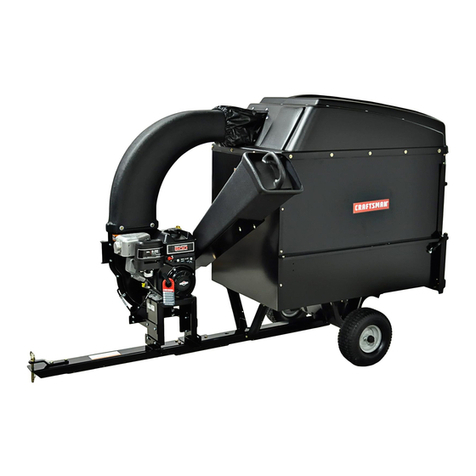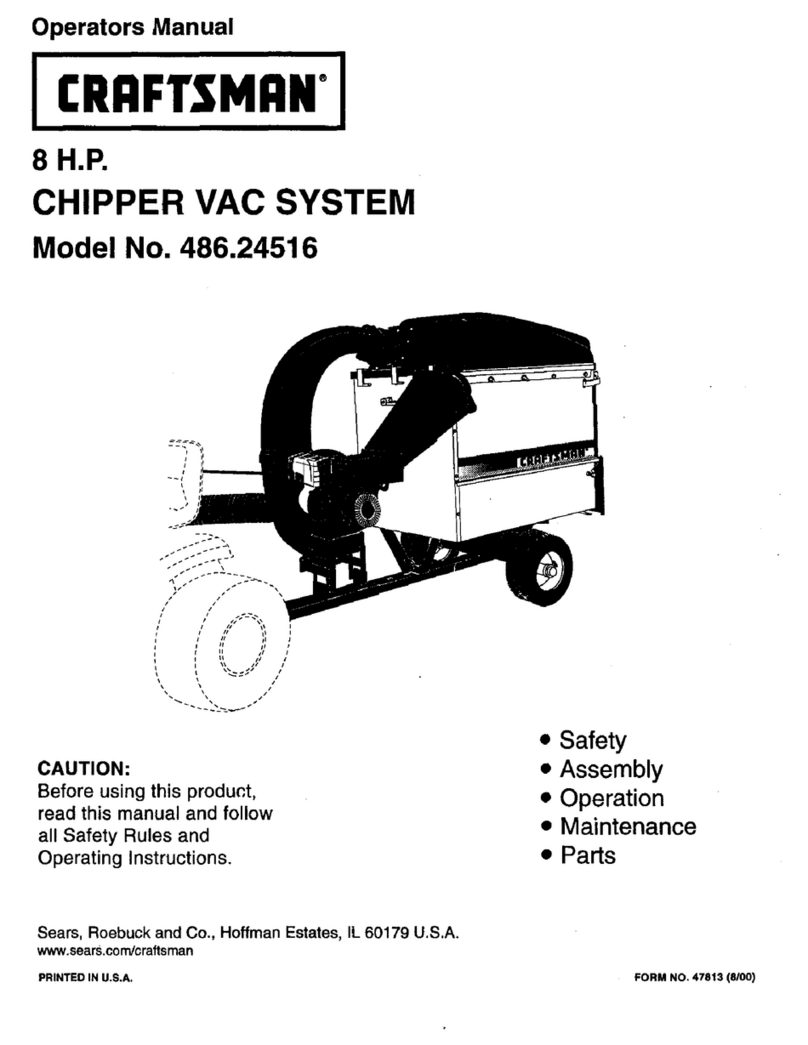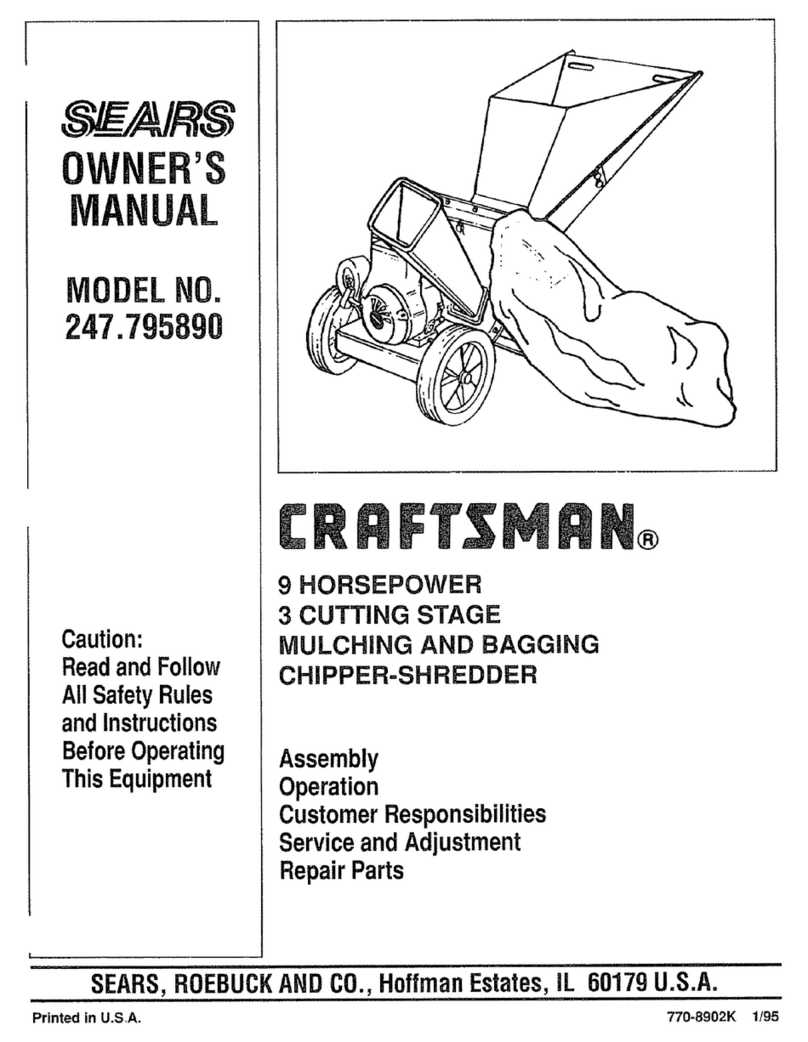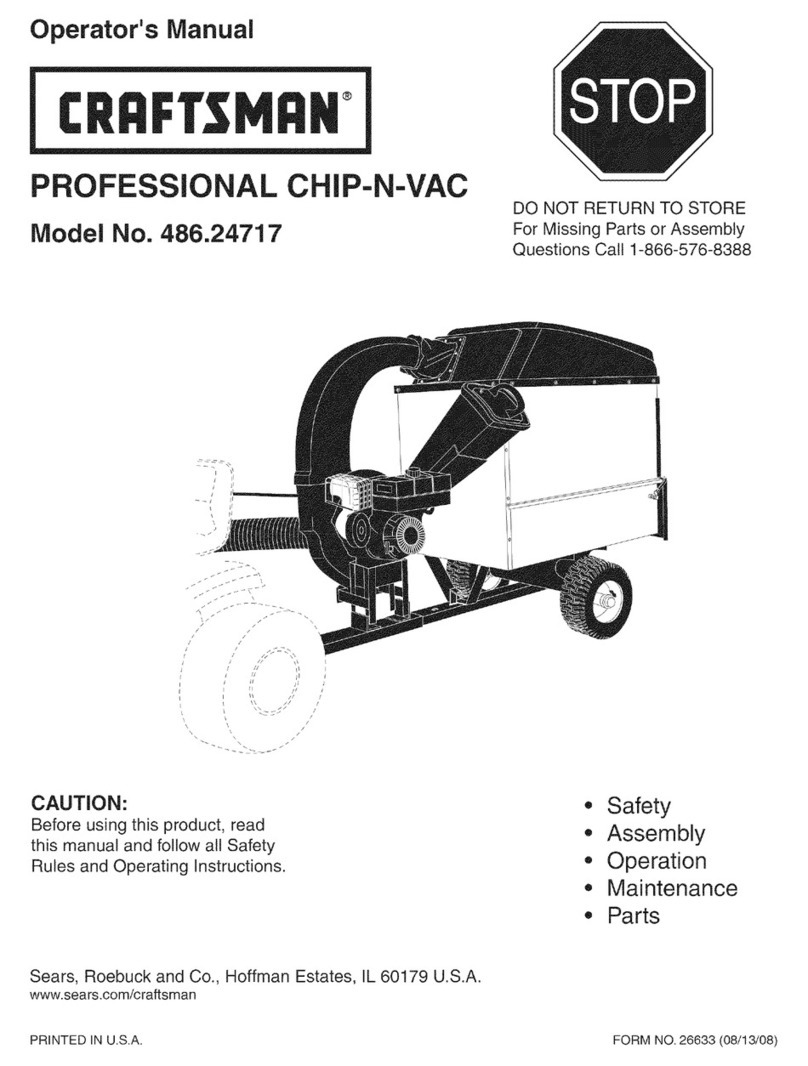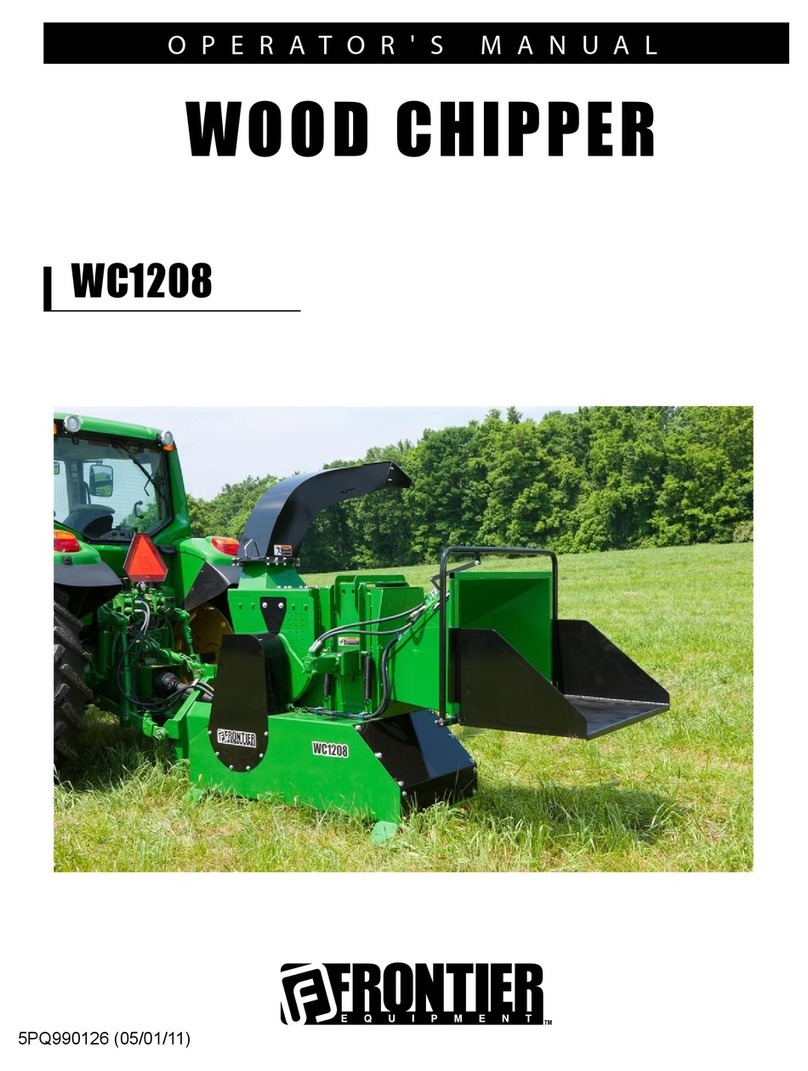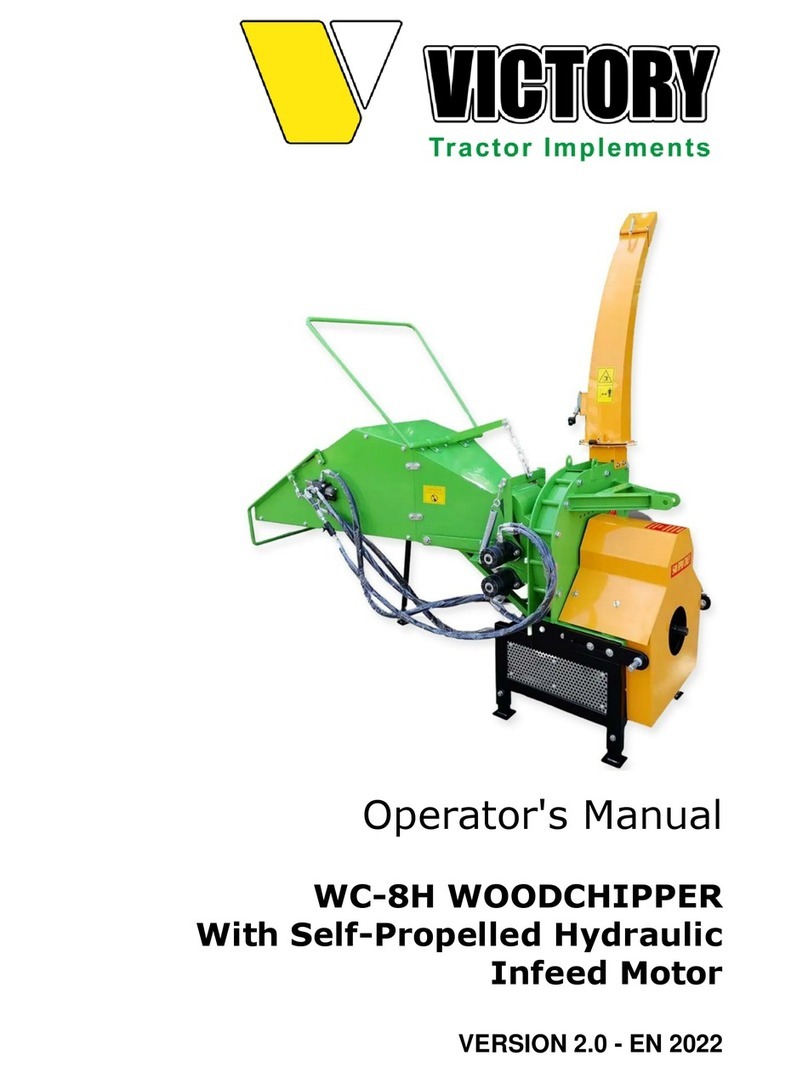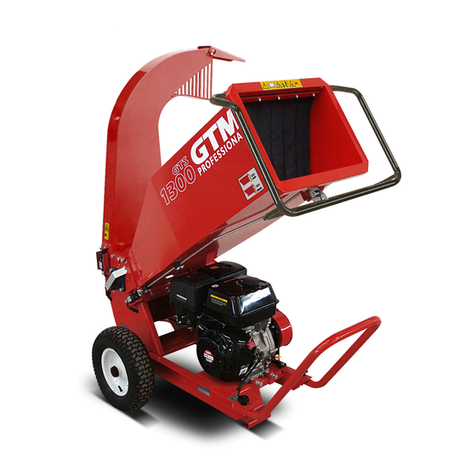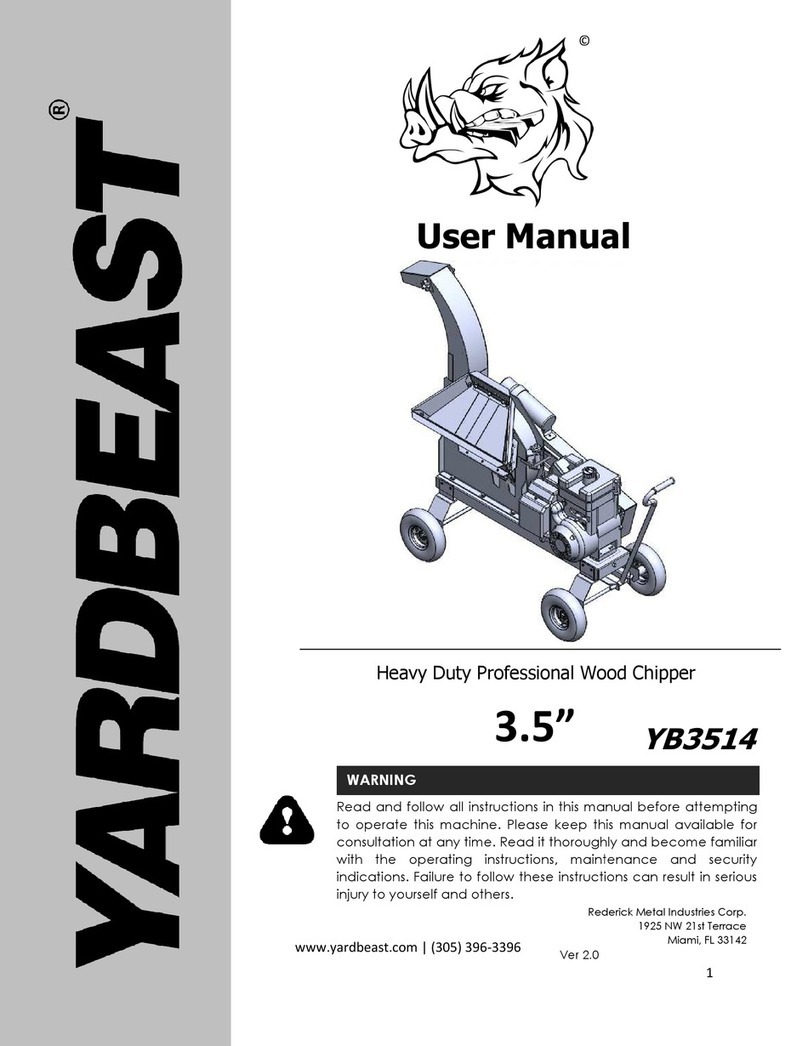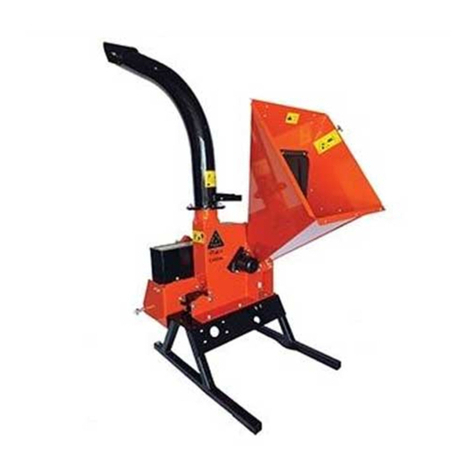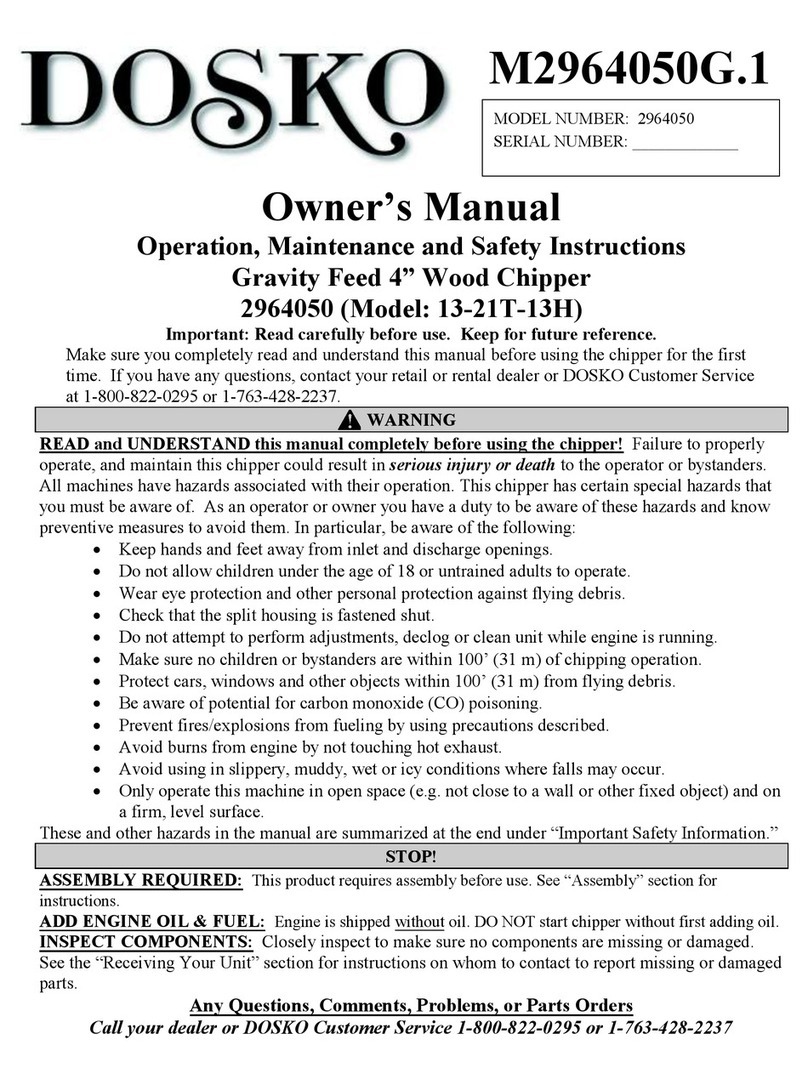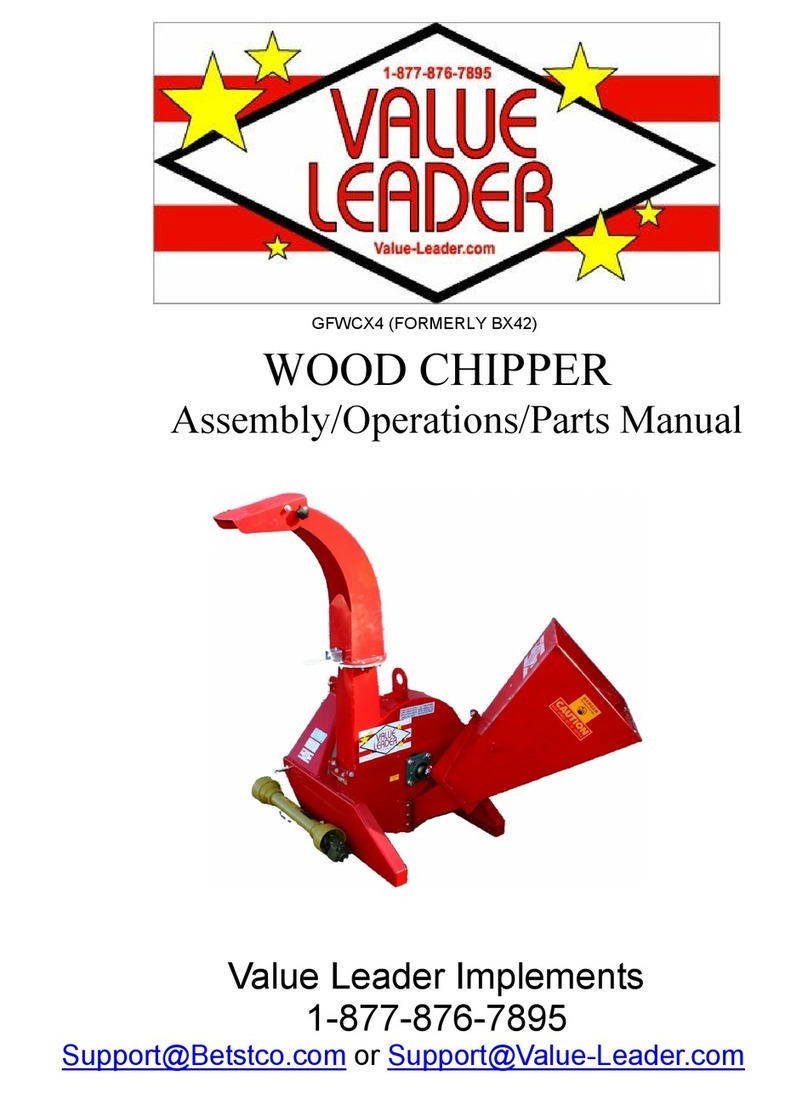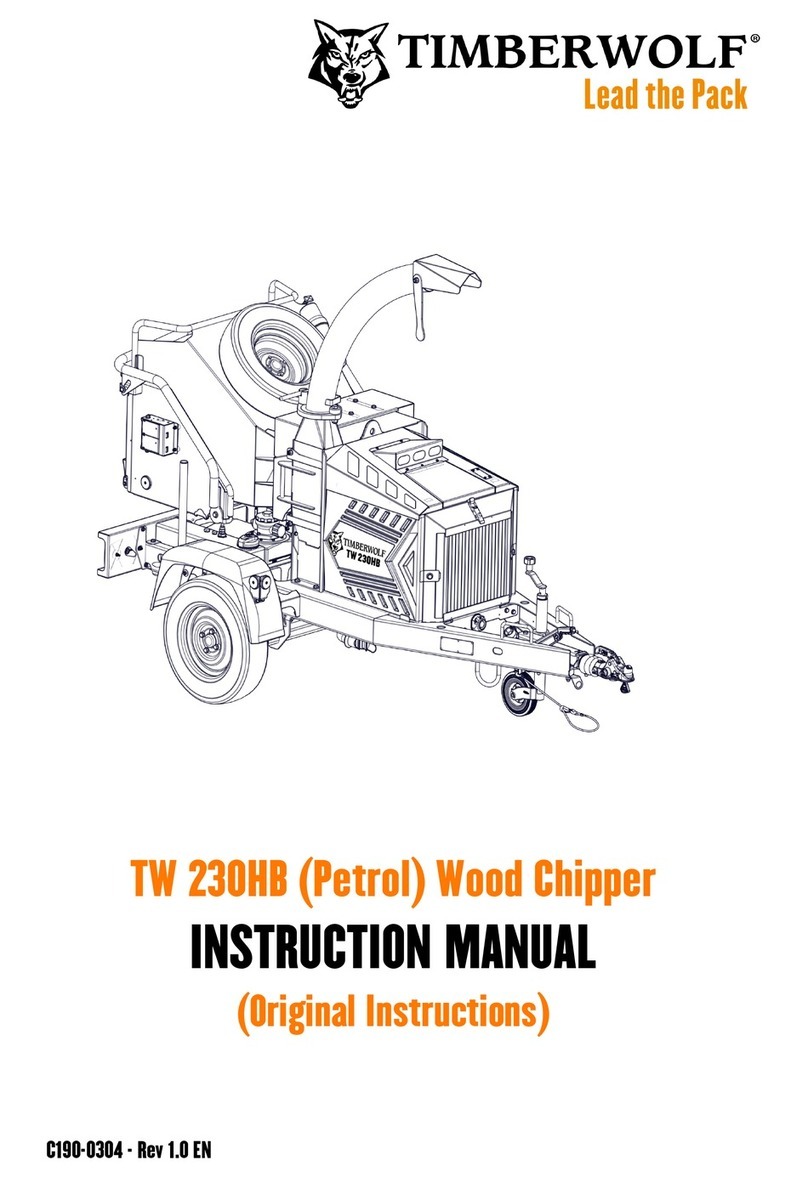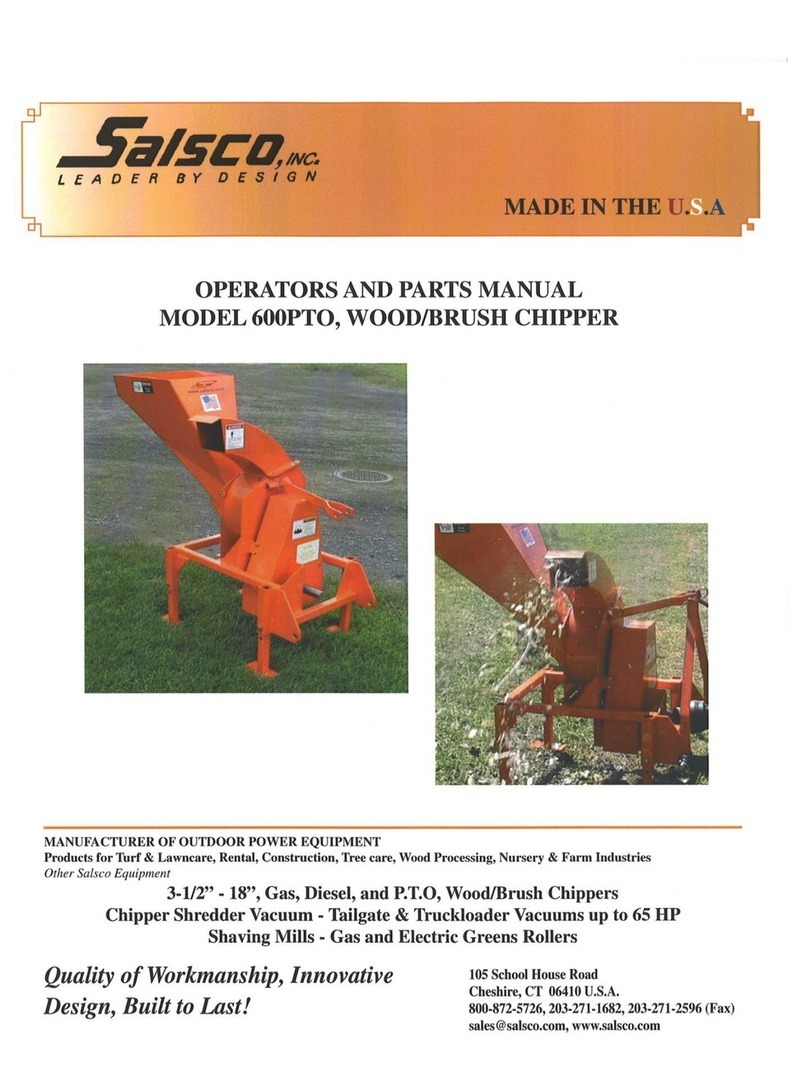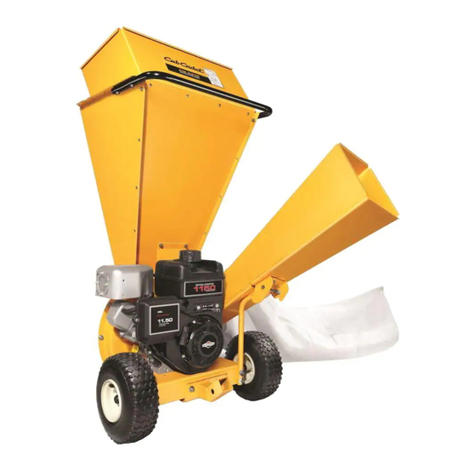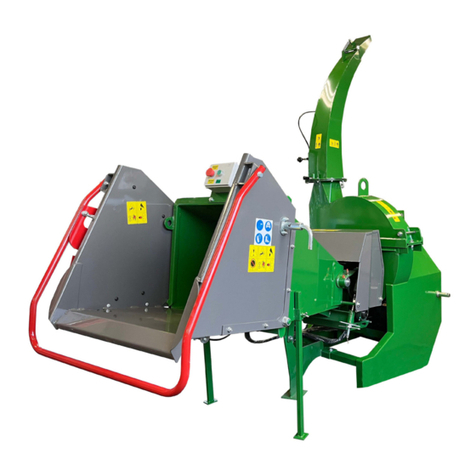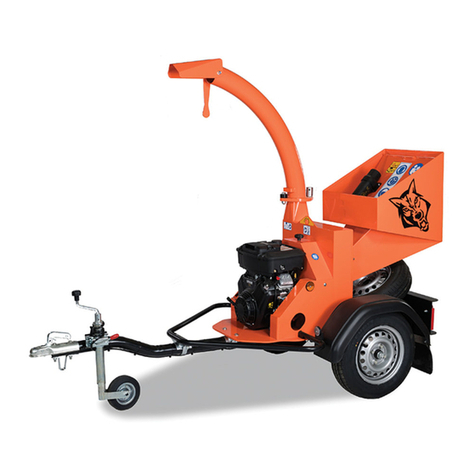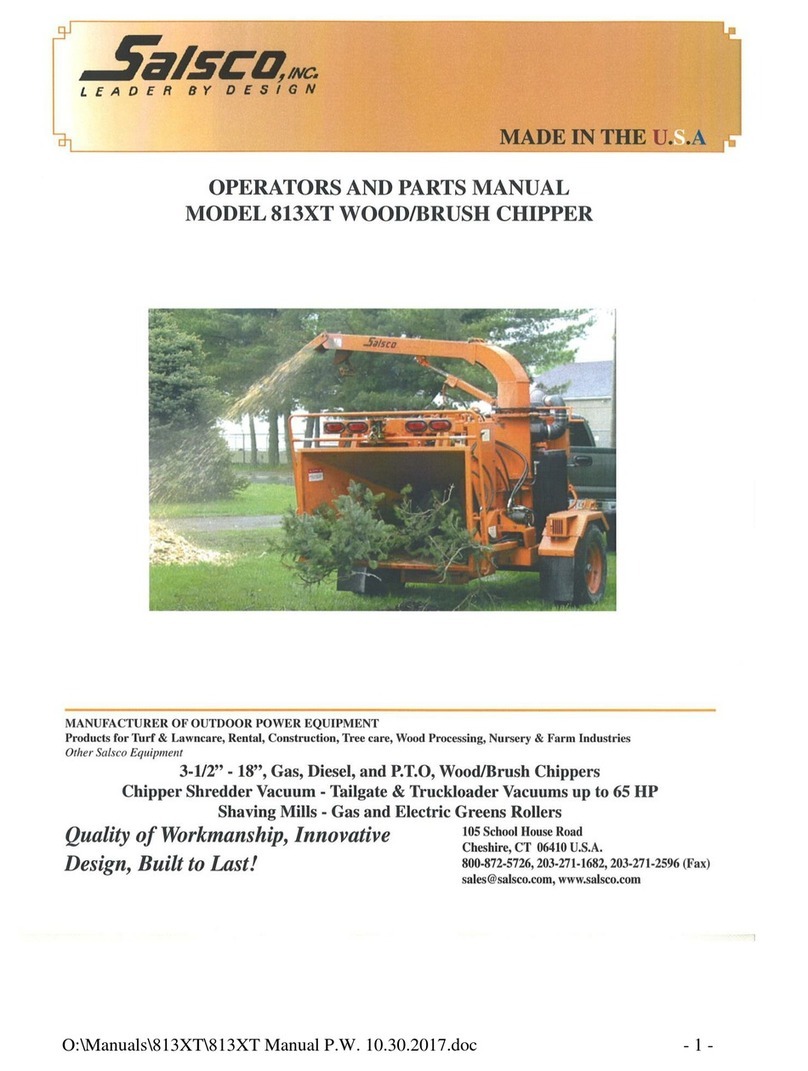1.
Leave 1/2 inch air space at top of
fuel tank to
aliON
for expansion of
fuel.
OPERATION
1. Before starting this equipment,
make certain that the chipper chute,
vacuum inlet, discharge opening,
and blower deflector are empty.
Disconnect spark plug wire before
making these checks.
2.
Never carry passengers
on
this
equipment. They could fall off and
be seriously injured, or they could
interfere with safe operation.
3.
Do
not allow hands or any other
part of the body or clothing inside the
vacuum inlet, chipper chute,
discharge opening, blower deflector,
or near any moving part.
4. Before vacuuming, inspect the
area where the equipment is to be
used and remove all metal, bottles,
cans, or other foreign objects.
5.
Do not vacuum any burning or
smoldering materials such as cigars,
cigarettes, ashes, or cinders.
6.
When vacuuming or chipping,
be
extremely careful that pieces of
metal, rocks, bottles, cans, or other
foreign objects are not inclUded.
7.
Do
not use vacuum or blower
on
areas that have been recently
treated with fertilizers, pesticides, or
herbicides. Follow chemical
manufacturer's safety instructions
regarding contact with treated areas.
8.
Do
not vacuum flammable liquids
such as gasoline, kerosene, diesel
fuel, paint thinner, etc.
9.
If
equipment strikes any foreign
object or starts making an unusual
noise or vibration, immediately shut
off engine and allow all
mOVing
parts
to come to acomplete stop.
Disconnect the spark plug wire and
secure
it
away from the spark plug.
Then take the following steps:
a.
Inspect for damage.
Safety
g.
Do
not store the machine or fuel
container where there
is
an
open
flame or spark, or where ignition
sources such as hot water and space
heaters, furnaces, clothes dryers,
stoves, or electric motors are present.
b. Replace or repair any damaged
parts.
c. Check for and tighten any loose
parts.
10.
If
equipment jams or becomes
clogged, immediately shut off the
engine and allow all moving parts to
come to acomplete stop. Disconnect
the spark plug wire and secure
it
away from the spark plug. Use only a
wooden stick
to
clear away debris.
11. Before adding or changing any
attachments or before switching
between vacuum and blower oper-
ation stop the engine and allow all
moving parts
to
come to acomplete
stop. Disconnect the spark plug wire
and secure it away from the spark
plug.
12. Keep all guards, covers, and
shields
in
place and
in
good working
condition.
13. Always stand clear of discharge
area when operating equipment with
blower deflector installed. Material
exits at ahigh speed from the blower
deflector.
14.
Do
not operate the chipper with
the blower deflector installed.
15.
Do
not operate the chipper if the
chipper chute flap
is
damaged or
missing.
16. Keep your face and body safely
away from the chipper chute. When
chipping, stand
on
either side of
chute and keep arms perpendicular
(at a
90°
angle)
to
chute inlet.
17.
Do
not overreach when feeding
material into the chipper chute. Keep
proper balance and footing at all
times.
18. Check collection bag frequently
for deterioration or wear and replace
worn bags. Use only original-
equipment replacement bags.
4
Bags manufactured by others could
present asafety hazard.
19. Before removing and installing
collection bag, stop the engine and
allow all moving parts to come to a
complete stop. Disconnect the spark
plug wire and secure it away from
the spark plug.
20. Empty the collection bag after
each use. Decomposing debris
could generate enough heat to catch
fire.
21. Exercise extreme caution on
slopes and avoid excessively steep
slopes.
22. Never operate this equipment
on
aslippery surface.
23. Look behind and use care when
operating
in
reverse.
24.
Do
not allow any part of the
engine, especially around the cooling
fins and muffler to become clogged
with leaves, oil, grease, or any other
combustible material.
25. Watch for traffic when operating
near, or when crossing roadways.
26. Never leave the equipment
unattended when the engine
is
running. Stop the engine, disconnect
spark plug wire, and secure it away
from the spark plug before leaving
the equipment.
27. Use only attachments and
accessories that are approved for
use with this equipment.
28. Operate equipment only
in
daylight or
in
good artificial light.
29.
Do
not tamper with the engine
governor settings. The governor
controls the maximum safe operating
speed and protects the engine and
all moving parts from damage
caused by excessive speed.
Request help at the nearest Sears
service location if aproblem exists.



